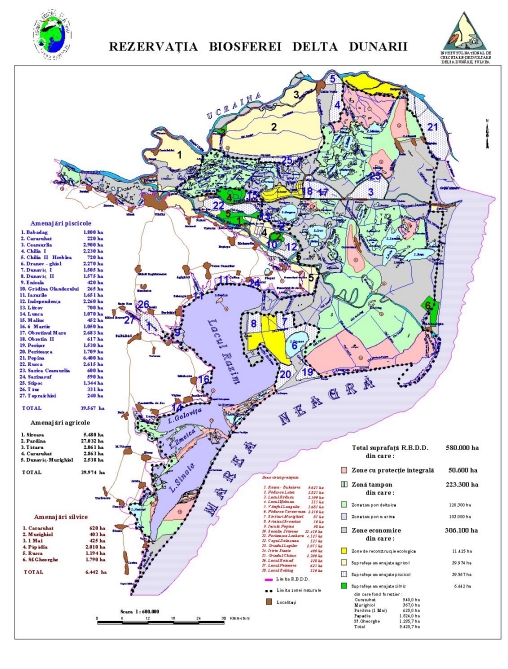
|
|
Biosphere Reserve Danube Delta- BRDD
 |
||
Through the impressive diversity of the habitat and life forms that it hosts in a relatively reduced space, the Danube Delta constitutes a truly biodiversity museum, a natural reserve of genes of huge value for the natural universal heritage.
The negative effect of the human activity in Danube delta through overexploiting the delta's resources of fish mainly and development of activities unsuited to the deltaic system is cumulating also with the harmful activities outside Delta, with a potential risk of disturbing the natural balance of the natural ecosystems. There was an urgent need of local and regional cooperation for reducing the negative effects, to protect the existing zones.
These were the arguments which led to the declaration of the Danube Delta, by the Romanian Government, in 1990, Biosphere's Natural Reserve.
The universal value of this area has been acknowledged through its inclusion in the international network of biosphere's reserves, in the frame of the "Man and Biosphere" program (MAB) launched by UNESCO in 1970, and in the World Natural and Cultural Heritage, elaborated by UNESCO in 1972. The Biosphere's Natural Reserve of Danube Delta has been considered as wet zone of international importance, especially as a water birds habitat.
The Biosphere Reserve Danube Delta- BRDD, with a total area of 5800 km 2 has as the following geographical units: The marine Danube, from Cotul Pisicii to Sulina, the flooded marsh in the Isaccea-Tulcea area, The Danube delta, the salty areas of Murighiol, the lagoon complex of razim-Sinoe and the seaside zone from Chilia channel mouth to Capul Midia, and as geomorphologic divisions: the river Delta (from Ceatal Chilia to the banks of Letea- Caraorman-Crasnicol) the river marine delta (between the banks of Letea-Caraorman and the Black sea coast) and the lagoon complex Razim-Sinoe.
This area is divided in three functional areas:
-totally protected areas (8.7% from the total area)-exceptional value areas from a scientifical, hystorical and aestethical point of vue.
-cache areas (38.5% of the total area)-areas where the anthropic impact is limited.
-economic zones (52.8% from total) -terrains situated in zones of national interest, public areas and private areas of local interest where can take place nature regenerative activities which do not disturb the natural ecosystem.





